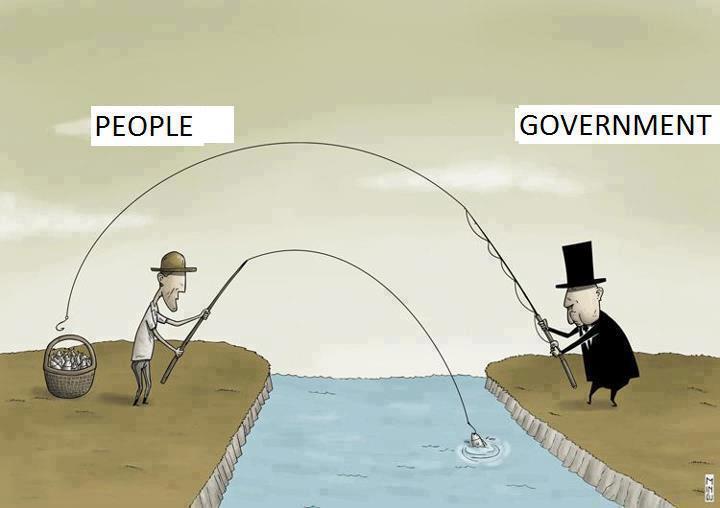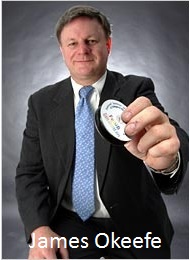by John Hnatio
I received my first patent for something called predictive analytics, which is used to project the probabilities that certain types of events will happen in the future. Predictive analytics use many techniques from data mining, statistics, modeling, machine learning, and artificial intelligence, to analyze current data to make predictions about the future.
From 2007 to 2012, I made and produced two major products—one for enhanced school safety, and another for improved food safety, using my new invention. In 2012, the Food and Drug Administration (FDA) stole my ideas, reengineered them, and produced a number of directly competing U.S. Government products for food safety, and gave them away to industry free of charge. In 2015, the Department of Justice stole my ideas and reengineered them to produce a competing product for school safety that they too gave away to the public and private sectors for free. Large enough sales of our products never materialized because of the unfair competition, and my little companies were driven out of business.
As things turned out, the market value of predictive analytics went through the roof, and pretty soon everyone across industry verticals was using my patent and my trade secrets as I helplessly stood by, destitute, and unable to pay the huge lawyers’ fees to defend myself. I was downright angry at my own Government for what they had done to us. By the way, the value of the predictive analytics market is expected to top $9.20B by 2020. In my particular case, I lost a $6M personal investment and my entire retirement savings trying to start up my own small business—not to mention the millions and millions of dollars lost by the venture capitalists who shared my vision.
secrets as I helplessly stood by, destitute, and unable to pay the huge lawyers’ fees to defend myself. I was downright angry at my own Government for what they had done to us. By the way, the value of the predictive analytics market is expected to top $9.20B by 2020. In my particular case, I lost a $6M personal investment and my entire retirement savings trying to start up my own small business—not to mention the millions and millions of dollars lost by the venture capitalists who shared my vision.
But my case is not atypical of what is happening across America as the Federal Government defies Article I, Amendment IV and Amendment V of the U.S. Constitution, and violates the very same principles upon which the Department of Justice is supposed to enforce Sherman Antitrust laws in the private sector. In a real twist of irony, the U.S. Government is allowed to engage in the same predatory and noncompetitive conduct that results in prosecution if the same thing is done by industry.
In 2013, I modified the mission of my non-profit 501c3 Institute for Complexity Management or ICM to provide pro bono services for small businessmen and women who are the victims of unfair U.S Government competition. The goal of ICM is to raise national awareness that the U.S. Government is destroying the very entrepreneurship and innovation representing the cornerstone of our economy and the creation of new jobs—small business. Since that time, I have found several poster children of unfair U.S. Government competition against small businesses where the lives of entrepreneurs are being destroyed and high quality jobs for Americans are being lost. A situation that is literally annihilating entrepreneurship in America.
The first case involves my former small company FoodQuestTQ (with TQ standing for threat quotient) in Maryland. In this case, FDA and their prime contract or Battelle Memorial Institute, teamed up to steal my technology as they violated the Internal Revenue Service (IRS) tax code claiming non-profit status and by violating Sherman Antitrust laws. Even though Battelle is one of the most profitable scientific and research businesses in the world, the U.S. Government nonetheless allows Battelle to enjoy a non-profit tax status as it competes directly against small business under lucrative government contracts. The Office of Justice Programs later did the very same thing with my School SafetyTQ product. School SafetyTQ was the first science-based software to look across the full range of school safety challenges from shootings, outbreaks of disease, bullying, fire, transportation safety, and much more.
or Battelle Memorial Institute, teamed up to steal my technology as they violated the Internal Revenue Service (IRS) tax code claiming non-profit status and by violating Sherman Antitrust laws. Even though Battelle is one of the most profitable scientific and research businesses in the world, the U.S. Government nonetheless allows Battelle to enjoy a non-profit tax status as it competes directly against small business under lucrative government contracts. The Office of Justice Programs later did the very same thing with my School SafetyTQ product. School SafetyTQ was the first science-based software to look across the full range of school safety challenges from shootings, outbreaks of disease, bullying, fire, transportation safety, and much more.
A small company named Demodulation in New Jersey developed a revolutionary technology that was used by the U.S. Government for highly classified applications. Like all of the cases we have found, the U.S. Government stole Demodulation’s technology, reverse engineered it, and produced several products that they used for things lik e submarine counter warfare, inventory of munitions, the targeting of precision guided munitions, and for pressure sensors in nuclear weapons, to mention only a few of the classified and unclassified applications of the revolutionary technology. Yes, Battelle was involved too. This case is particularly bad because it involves domestic intelligence activities against the small U.S. company by the Army, the Department of the Navy, and the National Security Agency, to steal their trade secrets. Demodulation’s patented technology was worth billions of dollars across multiple industry verticals.
e submarine counter warfare, inventory of munitions, the targeting of precision guided munitions, and for pressure sensors in nuclear weapons, to mention only a few of the classified and unclassified applications of the revolutionary technology. Yes, Battelle was involved too. This case is particularly bad because it involves domestic intelligence activities against the small U.S. company by the Army, the Department of the Navy, and the National Security Agency, to steal their trade secrets. Demodulation’s patented technology was worth billions of dollars across multiple industry verticals.
Another case involves a small company in Illinois that was named the Wesleyan Company. The owner of the company invented a new
 hydration, i.e., drinking, system that was used to keep soldiers on the battlefield safe in the event of nuclear, biological, and chemical warfare. Again, the U.S. Army, in league with their prime contractor Battelle Memorial Institute at Natick Laboratories, stole the technology from the little company after they submitted an unsolicited proposal asking for help to manufacture their product in order to save the lives of American soldiers. Instead, the U.S. Army and Battelle reverse engineered the technology and began producing the stolen hydration systems in house. Wesleyan company became the victim of lawyer and judicial misconduct in the Armed Services Board of Contract Appeals. The U.S. Army Criminal Investigations Division refuses to act on the overwhelming evidence of criminal misconduct by the Army and their contractor that was presented to them by ICM. The U.S. Government refuses to pay over $55M in royalties that it owes the Wesleyan Company.
hydration, i.e., drinking, system that was used to keep soldiers on the battlefield safe in the event of nuclear, biological, and chemical warfare. Again, the U.S. Army, in league with their prime contractor Battelle Memorial Institute at Natick Laboratories, stole the technology from the little company after they submitted an unsolicited proposal asking for help to manufacture their product in order to save the lives of American soldiers. Instead, the U.S. Army and Battelle reverse engineered the technology and began producing the stolen hydration systems in house. Wesleyan company became the victim of lawyer and judicial misconduct in the Armed Services Board of Contract Appeals. The U.S. Army Criminal Investigations Division refuses to act on the overwhelming evidence of criminal misconduct by the Army and their contractor that was presented to them by ICM. The U.S. Government refuses to pay over $55M in royalties that it owes the Wesleyan Company.
A young entrepreneur in Ohio invented the quintessential “better mousetrap,” when she solved a pressing problem that the U.S. Army had been grappling with for many  decades. Unhappy with toothed zippers and Velcro®, the Army took a look at something called Zipr Shift Klōs® which mimics the spine and is a synergy of the toothed slide fastener and flexible packaging zipper (Ziploc®) to create the strongest, flexible, re-closable fastener in the world. Again, trying to obtain a grant from the Army’s Small Business Innovation Research (SBIR) program, the inventor spoke with an Army researcher at Natick Laboratories who basically asked her the loaded question, “Why should we fund your research when all we have to do is build our own?” The entrepreneur is now watching in disbelief as her own government is stealing her idea. The SBIR grant, A16-062, perfectly described Zipr Shift’s novel closure; however, it was awarded to another contractor, a Carnegie Mellon University spinoff company called NanoGriptech Inc. that has committed grant fraud in obtaining multiple SBIR grants for the same research. Zipr Shift Klōs® is another technology that is worth potentially hundreds of millions of dollars as the US Army would want the closure on all of its protective gear and shelters, replacing current fasteners.
decades. Unhappy with toothed zippers and Velcro®, the Army took a look at something called Zipr Shift Klōs® which mimics the spine and is a synergy of the toothed slide fastener and flexible packaging zipper (Ziploc®) to create the strongest, flexible, re-closable fastener in the world. Again, trying to obtain a grant from the Army’s Small Business Innovation Research (SBIR) program, the inventor spoke with an Army researcher at Natick Laboratories who basically asked her the loaded question, “Why should we fund your research when all we have to do is build our own?” The entrepreneur is now watching in disbelief as her own government is stealing her idea. The SBIR grant, A16-062, perfectly described Zipr Shift’s novel closure; however, it was awarded to another contractor, a Carnegie Mellon University spinoff company called NanoGriptech Inc. that has committed grant fraud in obtaining multiple SBIR grants for the same research. Zipr Shift Klōs® is another technology that is worth potentially hundreds of millions of dollars as the US Army would want the closure on all of its protective gear and shelters, replacing current fasteners.
Then there’s the case of a small innovative company in California that developed a software that can fuse together any media from a variety of different sources, and present them to decision makers in an interactive environment to enhance security and better manage emergencies like terrorist attacks—something like a war-room on a thumb drive. The inventor of the technology deployed his technology with numerous agencies, all within the federal sector, that is before he ran head-long into the jaws of the Department of Homeland Security (DHS). His technology was proven to work and was successfully deployed for critical asset surveys and special events. DHS subverted the license and passed along the technology to several beltway contractors to service contracts without informing the creator, nor did they compensate for the use of the technology. When confronted they rationalized it by saying it was easier to give the contract to an existing rider contract. The licensing was also circumvented when they gave the finished products to private stakeholders for venues collected as an incentive to allow DHS to collect the property in the first place. Again no compensation nor any information was passed to the inventor, stating it was classified information and they couldn’t share it. By doing this, DHS competed directly with the company and essentially drove them out of the market with their own tool. When the licenses were terminated DHS threatened to black ball from any future contracts or other agencies, which they did. After terminating the licenses DHS simply took the technology and methodology they had been trained with and reverse engineered it and stood up their own collection teams using a much more rudimentary technology based on a PDF or a virtual tour. None of which have security or safe guards for the data sets. So much for the idea of licensing someone else’s ideas and products. Yet another case of millions and millions of dollars of stolen licensing fees.
After working for over ten years as an applied physicist at the University of Miami, Jonathan Walkenstein became a US Army Aviation Warrant Officer. In addition to his flight duties, Jonathan helped develop many life-saving solutions for the Army Crash investigation community. His work on the airbags in helicopters program helped the lab win a Presidential Unit Citation. After his honorable discharge from the Army in 1996, Jonathan developed Color Night Vision and Sensor Fusion technologies. In 1998 Jonathan founded CANVS Corporation (a Veteran Owned Small Business) to provide transformational technologies to the Operators within the US Night Vision Community. After winning many contracts with the special forces and the intelligence community, CANVS became aware of the unlicensed use of its patented sensor fusion technologies and the release if its intellectual property in a CANVS/SOCOM SBIR Phase-I and Phase-II contract. It took ten years for CANVS to get permission to sue the Government for Patent infringement and, after an 18-year battle, the US Government settled out of court and payed CANVS a mere $14M licensing fee for over $17B of admitted infringement of its technology—less than 1 cent for each dollar of infringement. CANVS is still fighting against US SOCOM in the Armed Services Board of Contract Appeals—a dispute that has been ongoing since 2005, over breach of data rights related to CANVS color night vision technologies. CANVS is suing SOCOM for $100M.
Finally, let’s talk about the fellow who built a ship that moves through the water by using something called “supercavitation”—the creation of a gaseous layer around the hull to reduce friction as it slides through the water—a technology that allows you to reach very high speeds using relatively small amounts of fuel. The low radar cross section and the energy absorption of the craft can help it evade detection by sonar and radar. It moves so fast through the water that a torpedo cannot keep up with it. But what do you think happened when the U.S. Government realized that an entrepreneur broke the rules? Well, it’s not a pretty sight. In this case it was the “not invented here” rule. Usually it’s the Pentagon that tells entrepreneurs what is best, and then contracts the job out to one of their selected “big” contractors—this is how the military industrial complex usually works. When the Navy found out what was going on, they proclaimed that it did not need the new technology and then promptly slapped a secrecy order on the inventor. The state secrets privilege is one of the sneakiest ways the U.S. Government competes unfairly with small innovative companies. In many cases, the inventor himself is not even told why the order has been applied while he or she is simultaneously stopped from selling the product to anyone but the same U.S. Government that has refused to buy it in the first place. In the meantime, the small company’s investments of millions and millions of dollars are going nowhere fast as the U.S. Government hides behind secrecy to simply take what it wants.
These are only a few examples of the cases we have found at ICM, and the list goes on and on. Many of the companies we talk with are afraid to come forward out of fear that they will be “blackballed” by the U.S. Government from receiving future grants and contracts. So, instead of creating a stronger system that rewards small business innovation and job creation to benefit the economy and strengthen the defense industrial base, the U.S. Government drives the very entrepreneurs our economy depends on out of business.

